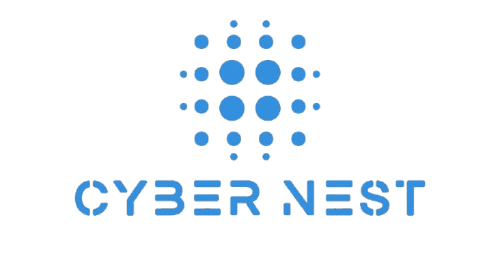
Executive Summary
As organizations accelerate digital transformation, hybrid cloud models—where on-premises systems interconnect with Azure cloud platforms—have become the new normal. But with expanded connectivity comes an expanded attack surface. Threat detection services built for traditional IT perimeters fall short in the cloud era, where workloads are elastic, distributed, and constantly shifting.
This white paper explores how enterprises can secure the Azure edge with advanced, cloud-native threat detection and continuous monitoring. It outlines the unique risks of hybrid architectures, examines best practices for Azure cloud security, and presents a framework for organizations—especially in the San Francisco Bay Area—to strengthen their resilience in a fast-changing threat landscape.
The Hybrid Cloud Reality
Hybrid cloud adoption is rising for good reason:
- Enterprises want the flexibility of the cloud without abandoning on-prem investments.
- Regulatory requirements often demand certain data remain within local environments.
- AI, data analytics, and edge computing workloads run more efficiently when distributed across hybrid environments.
But the trade-off is complexity. Every additional connection point—between Azure services, on-prem networks, and third-party platforms—creates new potential attack vectors.
The Expanding Threat Landscape
Traditional perimeter defenses can’t protect against threats that move fluidly across hybrid environments. Common risks include:
- Identity Attacks – Compromised Azure Active Directory accounts exploited for lateral movement.
- Configuration Drift – Misconfigured virtual networks, firewalls, or RBAC policies leaving gaps.
- Shadow IT – Teams deploying Azure services without governance, bypassing corporate security.
- Data Exfiltration – Sensitive data exposed via unsecured storage or misrouted traffic.
- Advanced Persistent Threats (APTs) – Nation-state or organized crime groups exploiting hybrid cloud weaknesses.
Why Advanced Threat Detection Is Essential
Reactive monitoring isn’t enough. By the time a breach is detected, the damage is often done. Instead, organizations need cloud-native, proactive threat detection that continuously monitors activity across Azure and hybrid endpoints.
Core principles of advanced detection include:
- Behavioral analytics – Identifying anomalies, not just known signatures.
- Continuous vulnerability scanning – Finding risks before attackers do.
- Threat intelligence integration – Leveraging global attack data to predict local risks.
- Automated remediation – Enabling faster response with minimal manual effort.
- Hybrid visibility – Unified monitoring across cloud and on-prem workloads.
Azure’s Role in Hybrid Cloud Security
Microsoft has embedded advanced threat detection tools into the Azure platform, but many organizations underutilize them. Key capabilities include:
- Microsoft Defender for Cloud – Cloud-native protection that unifies threat detection across Azure, AWS, and GCP.
- Sentinel SIEM – A cloud-based security information and event management solution with AI-driven detection.
- Azure Policy & Blueprints – Guardrails to enforce compliance and security at scale.
- Azure Arc – Extending Azure security and governance controls to on-prem and multi-cloud environments.
When combined with continuous monitoring and governance, these tools provide a foundation for securing hybrid workloads.
Best Practices for Securing the Azure Edge
- Adopt a Zero-Trust Model
- Never trust, always verify.
- Enforce MFA, conditional access, and strict role-based permissions.
- Implement Continuous Threat Detection
- Use Azure cloud risk assessment frameworks to benchmark security posture.
- Deploy automated scanning and alerting across all endpoints.
- Integrate Threat Intelligence
- Leverage Microsoft’s threat intelligence plus external feeds for comprehensive coverage.
- Automate Incident Response
- Pre-build runbooks that auto-contain suspicious activity
- Reduce mean time to response (MTTR) with orchestration.
- Unify Hybrid Monitoring
- Centralize visibility with Azure Sentinel or other SIEM platforms.
- Ensure alerts correlate across on-prem and cloud workloads.
- Regular Compliance Auditing
- Map hybrid environments against frameworks like SOC 2, ISO 27001, HIPAA, and NIST.
Regional Spotlight: Why It Matters for Bay Area Enterprises
The San Francisco Bay Area is home to sectors like fintech, healthcare, SaaS, and AI startups—all of which depend heavily on Azure hybrid environments. These industries face:
- Strict compliance regulations (HIPAA, PCI DSS, SOC 2).
- Elevated risk of targeted cyberattacks.
- High data volumes requiring real-time threat detection and remediation.
For these companies, adopting a continuous, hybrid-aware Azure security strategy is not just best practice—it’s mission-critical.
Conclusion
Hybrid cloud has become the foundation of enterprise IT. But securing the Azure edge requires more than legacy tools and reactive monitoring. Organizations must embrace advanced threat detection services, continuous monitoring, and zero-trust principles to stay ahead of evolving risks.
Key takeaway: In hybrid environments, security is not static—it must be continuous, adaptive, and intelligence-driven.
